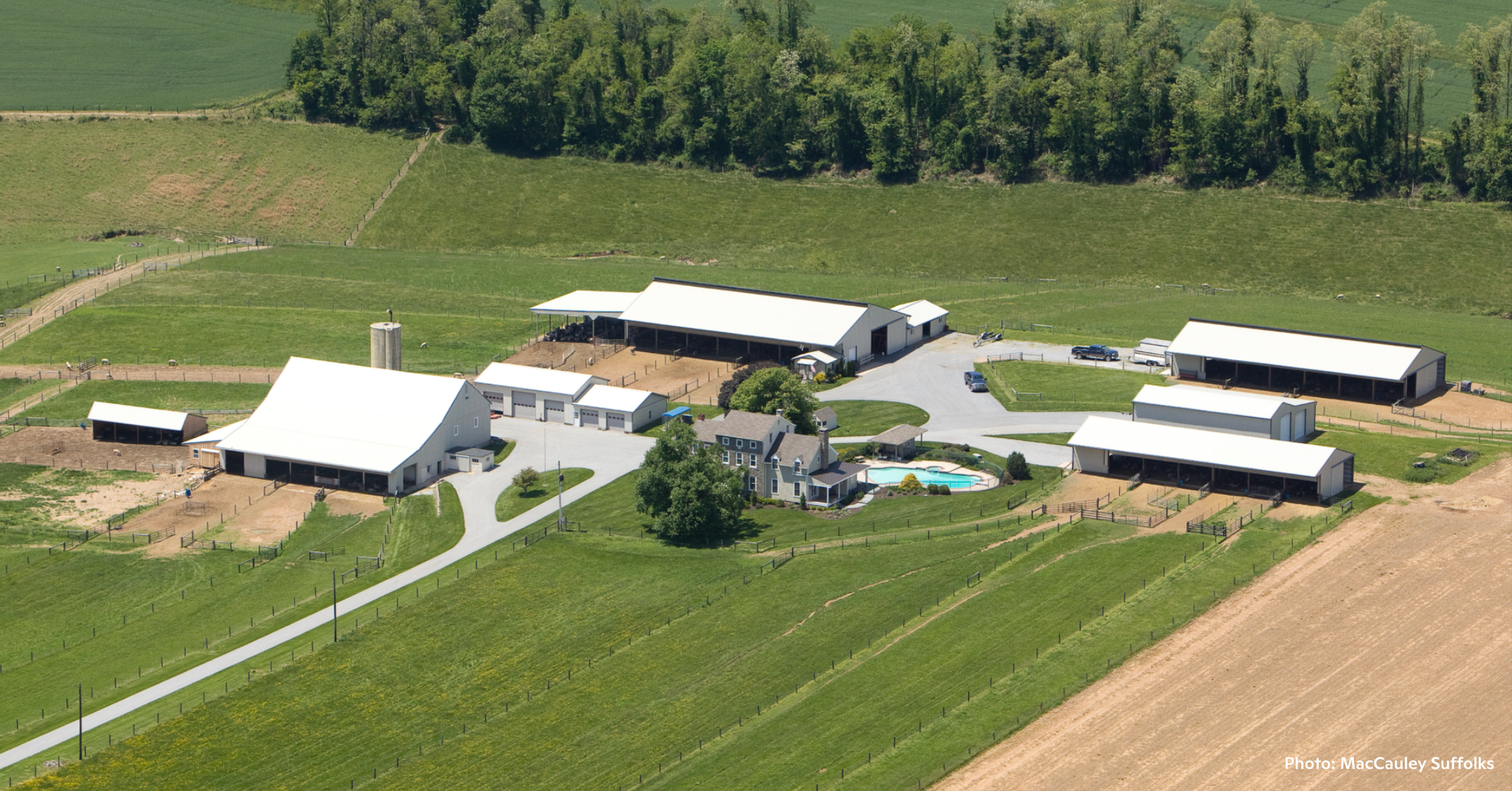
We know that farmed animals are “research” animals.
They belong to a class of sentient beings trapped at the intersection of two violent, tightly braided industries: animal agriculture and animal research.
These industries may present themselves differently — one wrapped in the myth of rural tradition, the other cloaked in the rhetoric of scientific progress — but they are identically premised. Both exist to exploit. Both exist to profit.
And both endlessly exploit sheep.
Commodified completely, sheep are exploited for their semen. Their flesh. Their whole bodies.
Sometimes, almost all at once.

Enter MacCauley Suffolks, a family-run farm recently featured by Farm Progress as a shining example of American agriculture.
The owners, Bill and Betsy MacCauley, call their operation a “hobby on steroids” and “laugh” as they describe it as “out of control”. But there’s nothing at all funny about what they do — or what they represent.

At MacCauley Suffolks:
- Ram semen is sold for breeding stock to other exploiters.
- Sheep are sold for exhibition (think 4-H, FFA, and adult show competitions) and as “seedstock” to other exploiters.
- Baby sheep are sold as “meat.”
- And, for the past five years, pregnant sheep have been sold into invasive biomedical research.

MacCauley Suffolks proudly supplies impregnated sheep — sold as “pregnant stock” — to the Children’s Hospital of Philadelphia (CHOP). At CHOP — a sadly descriptive acronym given what the lab does to the MacCauley sheep and other animals — these ewes have their babies removed (or, in the words of Farm Progress, their embryos “harvest[ed]”) and placed into artificial wombs. Say the MacCauleys, because sheep fetuses — like human fetuses — induce labor, sheep are appropriate victims for these experiments, which the MacCauley’s then characterize as nothing more than “practice” before researchers “mov[e] on to experiments in monkeys” and, eventually, humans.
With support from the likes of the McCauleys, sheep are “being increasingly” exploited in biomedical research, with the United States, New Zealand, and Australia leading the charge.
In 2024 alone, U.S. labs reported using over 23,000 sheep in research — a number that doesn’t even begin to reflect the full scale of their exploitation. (As we know, sheep used for agricultural research are not even counted, including — as documented by The New York Times — those who are left to suffer and die in pastures as part of “easy care” experiments and those who are born with deformed genitals and difficulty urinating because their mothers were pumped full of testosterone to artificially increase the size of their babies.)
Researchers admit to exploiting sheep because they’re gentle and easy to handle, because they’re cheap, and because they’re more “acceptable” victims than others.

Even within the unregulated world of agricultural research, sheep “occupy a low rung” — with their suffering often undocumented (even when documented for some other farmed animals) and their lives subject to some of the “boldest, most tenacious experiments.”
In the current biomedical arena, sheep find themselves brutalized for everything from the pregnancy-specific experiments supported by the MacCauley’s to studies on chronic heart failure, neurologic diseases, spinal cord injuries, fetal alcohol disorders, non-accidental head injuries, eye surgery training — and just about anything in between.
At the very same time that MacCauley Suffolks profits from selling sheep into biomedical enslavement, it also capitalizes on the “growing popularity of lamb meat.”
Each month, the farm sells about fifteen 6-8-month-old lambs to be killed at one of three local “butchering facilities” before being sold at local markets or served at local restaurants.
Bill MacCauley characterizes this barbarity as a “nice way” to “move” some male lambs for whom they have no other money-making use.
What emerges here is a clear vignette of the animal industrial complex — a system that, in the words of the MacCauleys themselves, is completely “out of control.”
From semen to slaughter, fetus to filet, womb to lab table, the system finds every opportunity to use farmed animals as means to their ends. And then market that use as virtuous.

This should remind us that the “line” between animal agriculture and animal research doesn’t really exist.
These aren’t two industries operating in parallel — they are parts of a single, violent system.
And, this means that, when we advocate for animals trapped in labs, we are also advocating for farmed animals — both in and out of those labs.
When we fight for farmed animals, we are fighting for those exploited under the banner of science, too.
They are all oppressed by a single sprawling, unrepentant system that exists to turn living beings into everything but their actual selves — semen producers, breeding machines, meat, milk, fabric, and test subjects — sometimes, even, all at once.
All at once . . . the very same way, it turns out, that the system itself must be dismantled.
Share this article on X or Bluesky.
Or copy, paste, and share this link anywhere else:
riseforanimals.org/news/sheep-exploited